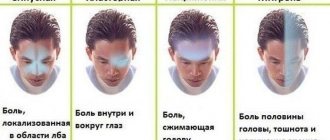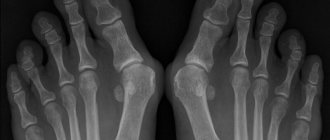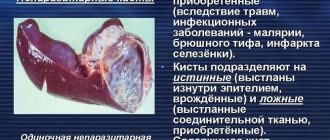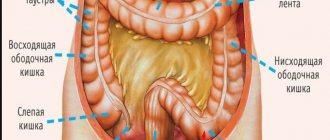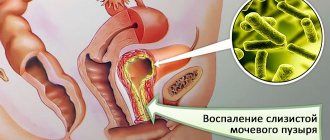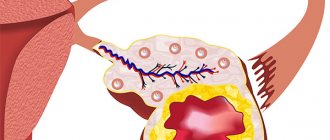The appearance of just one symptom such as a headache in the temples can disable you for a long time. Sometimes it simply interferes with work, settling in the lateral parts of the skull with a heavy and aching sensation. But in some cases, pain in the temple is accompanied by nausea or deterioration in well-being. The cause of this condition should be determined by a neuropathologist, sometimes together with related specialists. We will tell you when you need to visit this doctor urgently, even by ambulance, and when you can make an appointment for a scheduled appointment.
The main causes of pain in the temples
There are about 45 diseases that cause pain localized in the temporal region. The main ones are: increased blood pressure, migraine, muscle strain and infectious diseases that are accompanied by poisoning of the body. Life-threatening illnesses, such as stroke or meningitis, rarely cause this symptom. However, it can happen.
The causes of pain in the temples are conventionally divided into:
- Primary. These are independently existing diseases associated with the vessels or nerves of the head:
- tension headache;
- migraine;
- cluster headache;
- trigeminal neuralgia.
- Secondary, when the headache appears as a result of pathological conditions in the body or in the head itself, when there is a disruption in the normal functioning of one or more organs. This:
- cerebral stroke;
- head or neck injury;
- intracranial tumor or metastasis of a neoplasm of another localization to the brain;
- epilepsy;
- changes in the normal functioning of the vessels supplying blood to the brain due to hormonal imbalance caused by taking oral contraceptives, pregnancy;
- intoxication: infectious diseases (flu, sore throat, erysipelas), poisoning with nitrates or other substances contained in food, alcohol;
- inflammation of intracranial structures: temporal lobe abscess, meningitis, encephalitis;
- pathologies of skull structures: diseases of the paranasal sinuses, eyes, ears;
- mental illness.
Prevention
Preventive measures against headaches involve performing a set of actions that will help prevent the disease. When your forehead hurts and the discomfort does not subside for a long time, being supplemented by new symptoms, this may indicate the beginning of the development of the disease. Despite this, prevention recommendations are also relevant during illness, as they will help relieve pain.
In order to avoid headaches and further development of the disease, you need to:
- eliminate bad habits (cigarette smoking, alcohol), as this affects the functioning of the brain and leads to its destruction;
- adjust your diet, make it more balanced, with a minimum amount of harmful foods;
- do daily exercises, ideally, play sports;
- do not deviate from the daily routine, go to bed and get up at the same time;
- drink at least one and a half liters of water per day.
In addition to sports, yoga is also suitable - it helps improve blood circulation. This is especially true if you are constantly working at a computer. Pain can be prevented through meditation or art therapy. These options affect not only the brain, but also improve blood circulation in general and increase stress resistance.
A little anatomy
The temporal region is the area located in the projection of the temporal bone - that structure that is located upward from the ear and the bony protrusion located behind it - the mastoid process. We can say that this is a zone that goes 2-3 cm behind the ear and extends almost to the forehead.
The temporal bone is derived from the fusion of several bony parts. It is thinner than other bones and is capable of transmitting an ultrasound signal (this is used to perform ultrasound in children whose fontanel has already closed and in adults). It is designed in such a way that it has depressions, channels and protrusions for the passage of a large number of vessels and nerves. It is in it that the cavity in which the ear is located is located.
The skin in this localization is thin and smooth; hair follicles appear only in its posterior sections. The subcutaneous tissue here is loose.
In the temporal region there are:
- 2 muscles control the auricle: one of them ensures its movement forward, the other – upward;
- lymphatic vessels that go to their checkpoints, the lymph nodes located in front and behind the ear;
- the superficial temporal artery, which arises from the large external carotid artery;
- superficial temporal vein, running next to the artery of the same name;
- in the canal of the temporal bone there is a smaller internal carotid artery than the external one;
- auriculotemporal and zygomaticotemporal nerves;
- a branch of the trigeminal nerve responsible for transmitting to the brain the condition of the muscles, skin and subcutaneous tissue in the area in front of the ear, above and on both sides of the ear, as well as the auricle itself. The main part of the trigeminal nerve, which is its distributor - its node - lies in one of the recesses of the temporal bone;
- the facial nerve, which transmits how the facial muscles move, lies in one of the canals of the temporal bone;
- vestibulocochlear nerve, responsible for ensuring balance of the human body;
Also in the recesses of the temporal bone pass the cranial nerves, the vagus and glossopharyngeal, going to the internal structures located in the neck and chest (the vagus nerve reaches the abdominal cavity). Their damage affects many body functions.
In the front part of the temporal bone there is a fossa for the temporomandibular joint, which allows jaw movement (opening the mouth, chewing, moving left and right). It is held in place by ligaments running in different directions.
What structures can hurt in the temple area?
Why does my head hurt in my temples? This means that pain receptors located in:
- skin;
- subcutaneous tissue;
- muscles;
- nerves;
- arteries and veins;
- eyes;
- ear;
- sinuses;
- vessels of the dura mater;
- veins and venous sinuses in the cranial cavity;
- periosteum;
- structures of the temporomandibular joint
The bones themselves cannot hurt, and if there is a fracture of their internal structures, without damage to the periosteum (this is possible in the bones of the skull), then there will be no pain. The same applies to brain damage: as long as there is no compression of the meninges, impaired absorption of cerebrospinal fluid, or deterioration of venous outflow, the head will not hurt. There will be symptoms indicating brain damage, but no headaches.
Depending on the mechanism by which pain in the temples develops, it can be:
- vascular, associated with changes in the diameter of blood vessels, deterioration of outflow through the veins;
- muscular, when, for example, a muscle spasm has formed in some area, or increased impulse has developed at the point of transition from nerve to muscle;
- neuralgic, when nerve irritation occurs;
- liquorodynamic, associated with changes in liquor pressure;
- central, associated with the emergence of a focus of pathological impulses in the systems of pain and analgesic receptors;
- mixed, when several mechanisms are activated at once.
When it not only hurts, but also worsens the condition
This is how several of the following diseases and conditions occur.
Hypertensive crisis
Typically, this condition develops with pre-existing hypertension or another condition (for example, chronic kidney disease, nephropathy of pregnancy, or adrenal tumor - pheochromocytoma), accompanied by frequent registration of high blood pressure numbers. But it can be the first sign of illness. When the pressure rises quickly and sharply, the following symptoms appear:
- pain in the temples and nausea;
- feeling of “internal trembling”;
- hand trembling;
- “flies” before the eyes;
- anxiety;
- anxiety, panic, feeling of lack of air;
- cold sweat;
- There may be heart pain, blurred vision, and tinnitus.
The attack is provoked by stress, drinking a large amount of coffee, or physical overload the day before. It usually starts at night or in the morning. The pain is felt in the temples and the back of the head, often pulsating, but can also be pressing and aching in nature. With a gradual decrease in pressure with antihypertensive drugs, the pain goes away. Read more about the symptoms of a hypertensive crisis.
Brain stroke
This condition rarely develops out of nowhere. It is usually preceded by:
- conditions accompanied by increased blood pressure: hypertension, pheochromocytoma, acute and chronic glomerulonephritis, exacerbation of chronic pyelonephritis, chronic renal failure;
- severe emotional stress;
- severe physical activity;
- various anomalies in the structure of blood vessels supplying the brain.
In these four cases, the stroke most often takes the form of hemorrhage into the brain structures;
- atherosclerosis of head and neck vessels;
- varicose veins of the lower extremities, when blood clots appear in the expansions of the venous wall associated with slow flow in these veins;
- thrombophlebitis, especially when the rhythm of the heart is not always smooth, that is, there are arrhythmias.
A stroke tends to develop either in the morning, after rest (when it is associated with ischemia of a region of the brain), or after severe stress/physical activity.
It manifests itself as sharp pain, most often in the temples and back of the head. It is so unexpected and powerful that it has been compared to a “dagger strike.” After this, loss of consciousness may occur and this state of consciousness may persist or deepen to a coma for several hours or days. At the same time, symptoms appear that indicate brain damage:
- noisy, infrequent, rapid breathing or one that has an irregular rhythm;
- inability to speak;
- loss of ability to understand speech;
- facial asymmetry;
- difficulty or impossibility of moving the limbs of one side;
- difficulty swallowing;
- nasal voice and others.
Meningitis, encephalitis, meningoencephalitis
These are diseases in which a microbe (virus, bacterium, fungus) enters the meninges (meningitis) or the substance of the brain (encephalitis), inflaming one structure or both at once (meningoencephalitis). This can happen after a head injury, against the background of diseases of the ears, lungs, nose, as a complication of rubella, mumps, influenza, chicken pox, and also as an independent disease.
Symptoms:
- temperature increase;
- pain radiating to the temple;
- nausea;
- vomiting not associated with food intake;
- increased skin sensitivity: a light touch feels like a strong pressure and can be painful;
- looking at the light is unpleasant;
- sitting is more painful, so you have to lie down;
- when lying with your head thrown back or on your side, it is a little easier;
- there may be a rash on the body.
If encephalitis develops, then in addition to the listed symptoms or instead of some of them, focal symptoms appear, like those listed for cerebral stroke.
Brain abscess
This is a disease that, due to its causes (open skull injury, diseases of the lungs, teeth, ears, nasal cavity) is very similar to encephalitis. It develops when bacterial inflammation of the brain is limited, then softening occurs in its center, and purulent inflammation does not spread to the surrounding tissue, but melts this area.
Symptoms:
- headache that may radiate to the temples;
- temperature increase;
- weakness;
- dry mouth;
- dizziness;
- disturbance of consciousness from drowsiness to coma;
- nausea and vomiting;
- focal symptoms.
Severe flu
This disease is manifested by fever, weakness, pain in the forehead and temples, muscles and joints, sore throat and sometimes behind the sternum. A cough may appear immediately, and blood-streaked sputum may immediately be coughed up. A runny nose appears later, scant, snot with blood is released.
Severe sinusitis
This term refers to the accumulation of discharge (usually purulent) in the air-filled cavities of the skull. Only 4 of them - 2 frontal and 2 maxillary - lie on the surface and can be examined using an x-ray of the skull. The rest lie behind the nasal cavity, close to the brain. Inflammation of any of them can manifest as pain in the area of the right or left temple, fever, weakness, and nausea. If the maxillary or frontal sinuses are inflamed, pressing on them through the skin will increase the pain.
What to do if a child has a headache in the forehead area
If your child frequently experiences pain in the forehead, you should consult a doctor as soon as possible. Treatment should be carried out only on the basis of an established diagnosis.
Acute pain requires calling an ambulance, as it may be a symptom of:
- Meningitis.
- Encephalitis.
- Other neuroinfections.
- Concussion or contusion of the brain.
But just as often, children experience pain for physiological reasons, namely due to:
- overwork
. As a rule, school-age children are susceptible to this due to the heavy workload of the school curriculum; - oxygen starvation
. This occurs when the child spends most of his time indoors; - unbalanced diet
. The cause is also products containing a large number of chemical flavor enhancers and flavorings.
In these cases, it is necessary to normalize the child’s lifestyle, reconsider his workload, and leave more time for walks and play activities.
When pain in the temples is the main symptom
Let's consider the main pathologies with pain in the temples, based on the location of the pain
If only your temples hurt
Headaches in the temple area may accompany:
- Fasting for more than 20 hours. Apart from pain in the head, mainly in both temporal areas, there are no other symptoms.
- Prolonged stay in a stuffy room, causing brain hypoxia, leads to headaches.
- Severe stress and fear also lead to the appearance of this symptom without other signs. This is due to the release of adrenaline, which constricts blood vessels and leads to a deterioration in blood supply to the brain.
- Intoxication: carbon monoxide, alcohol, medications. In addition to pain in the temples, nausea, vomiting, and sometimes impaired consciousness are also noted.
- Lack of sleep. Such pain in the temples is also associated with deterioration of blood supply to the brain.
- Migraine. In this case, either the right or left temple hurts, that is, the pain is localized on one side. The pain can be preceded by a so-called aura: strange smells, sounds or shiny “flies” before the eyes.
- Temporal arteritis. In this case, the large and medium-sized arteries that lie near the carotid artery become inflamed. As a result, the blood supply to various small areas of the brain is gradually disrupted. The disease manifests itself as pain in the temple - right or left. The pain can be dull and monotonous, or it can be sharp and throbbing; sometimes spreads to the neck area. When you touch the skin of the scalp, the pain intensifies, and the sore temple may even become swollen. Chewing may also intensify the pain. An attack of pain may be accompanied by deterioration of vision, blurred vision, and increased temperature. Untreated arteritis can cause blindness and subsequently be complicated by a cerebral stroke.
- Hormonal imbalance in women during menstruation and menopause. Pain occurs in both temples and can spread to the back of the head. The syndrome is associated with the fact that hormones affect vascular tone, and changing their quantity changes the tone, that is, the vascular lumen. This leads to deterioration of blood supply to the brain and, accordingly, headaches.
- Eating foods with monosodium glutamate (flavor enhancer). In this case, 15-30 minutes after eating Chinese dishes, fried nuts, turkey cooked in its own juice, chips, potato snacks, soups from canned foods, a dull throbbing pain appears in the temples. It radiates to the forehead and is accompanied by excessive sweating and tension in the muscles of the face and jaw.
- Nitrite poisoning, which is mainly found in hot dogs (“hot dog headache”). A large amount of them is also found in corned beef, bologna sausage, bacon, salami, and smoked fish. Pain in the temples appears about half an hour after eating such food.
- "Chocolate" headache. In this case, the temples begin to ache after eating chocolate. This is due to the presence of caffeine and phenylethylamine in the bar, which cause vasoconstriction.
- Infectious diseases accompanied by intoxication: Lyme disease, brucellosis, tonsillitis, dental diseases. Here, in addition to headaches, symptoms characteristic of the underlying disease will be noted.
When the pain migrates
If it hurts in the temple area, it occurs in paroxysms, and the pain periodically moves to the back of the head, then to the forehead, then to the center of the head, accompanied by a feeling of anxiety, restlessness, “discomfort” in the head, we are talking about a psychogenic headache. In other words, the cause of this condition is not a violation of the structure or function of any organ, but the resulting stress or mental characteristics.
If the pain is localized in the frontotemporal region
Pain is projected to the forehead and temples in a large number of diseases. They are as follows:
- Ascending to great heights or descending to great depths.
- Approximately one in 20 people develop frontotemporal pain during or after air travel.
- Pain in the temples and forehead can also occur with a migraine. It is pulsating, accompanied by intolerance to sounds and bright light, worsening is noted even with normal walking, but lying down the pain subsides a little.
- Tension headache. They appear after work, when either the person’s neck and head were in an uncomfortable position for a long time, or there was stress. The disease can be chronic, appearing several times in six months, but it can also be episodic. An attack of pain in the frontotemporal region is characterized as “squeezing with a hoop” or “squeezing with a vice.” It lasts 4-6 hours, goes away on its own, and is not accompanied by other symptoms.
- Cluster headache. It appears spontaneously, in a series of attacks lasting 15-60 minutes, which develop 2-3 times a day and are repeated for several weeks or months. The pain goes away suddenly. Its signs: acute, sharp, localized near the eye with transition to the forehead and temple. At the same time as the pain, the eye on the affected side turns red.
- Head injury. Pain occurs if the bones of the skull or its soft tissues have been damaged and is localized on one side. In severe cases of contusion or compression of the head, the pain is diffuse, accompanied by nausea or vomiting, nosebleeds, hearing, vision or speech impairment. Difficulty breathing and convulsions may develop.
- Trigeminal neuralgia. After a certain movement of the jaw, or pressing on the skin in the parotid region, under the eye or in the area of the upper teeth, an attack of very strong, burning or shooting pain develops in the frontotemporal region. The pain is such that it makes a person freeze and stop previously started activities. Sometimes rubbing the sore spot helps.
- Hypertension (increased blood pressure). In this case, increased pressure numbers are recorded, against which the following periodically occur: headache in the temples and forehead (maybe in the temples and back of the head), “spots” before the eyes, dizziness, heart pain, redness of the face, tinnitus.
- Mild sinusitis. Here, usually against the background of a runny nose or after a cold, pain appears in the temporo-frontal region, the temperature rises, nausea, weakness, and fatigue occur. If the frontal or maxillary sinuses are inflamed, a runny nose reappears or intensifies, the snot is viscous, often mucopurulent.
- Temporal arteritis. Its symptoms were discussed in the section “If only your temples hurt.”
- Ophthalmological diseases.
When it feels like the pain only radiates to the temple
Pain radiating to the temple indicates the following possible diseases:
- Dysfunction of the temporomandibular joint. Here pain is felt when moving the jaw, radiating to the temples and the back of the head. Your ears or eyes may seem to hurt. It hurts more in the morning, then the symptom gradually disappears, returning the next morning. In many cases, a person feels a crunching or clicking sound when the joint opens, and may wake up from grinding his teeth.
- Facial injuries. Here there is a fact of injury, swelling of soft tissues or bruises at the site of its “receipt”.
- Cerebral angiodystonia (impaired tone of arterial or venous vessels). It hurts in the back of the head, or near the ear, or in the eye area, or in the frontal area, and radiates to the temple. The pain occurs at any time of the day and is dull, aching or aching in nature. Outside of an attack, a person suffers from insomnia, dizziness, his hands often become numb and weak, and there is often a malfunction of the gastrointestinal tract and allergies. Periodically, attacks of depression develop with body aches and difficulty breathing, which are sometimes difficult to distinguish from organic brain pathology (stroke, encephalitis, tumor).
If the temporal and eye areas hurt
When pain affects the temple and eye, it may be:
- Hypertonic disease. The pain is symmetrical, feels like a spasm, is accompanied by nausea, dizziness, and pain in the heart. Eliminated with drugs that reduce blood pressure.
- Vegetative-vascular dystonia. Pain in the temporo-orbital region appears when the weather changes, stress, lack of sleep, and may be accompanied by chills, sweating, nausea, and a panic attack. At the same time, blood pressure is normal, and the attack is well eliminated with painkillers. Vegetative-vascular dystonia is indicated by disorders that occur outside of headache attacks. This can be either pain and heart rhythm disturbances, or attacks of feeling short of air, or periodically developing abdominal pain with the urge to defecate. As part of dystonia of the autonomic system, sweating may be impaired, a slight increase in temperature may appear, and the process of urination may deteriorate. The diagnosis of vegetative-vascular dystonia is made when examination of the disturbing organs reveals nothing. Read more about the symptoms of vegetative-vascular dystonia.
- An attack of glaucoma. It begins suddenly, at night or in the morning, when there was stress the day before, or the person experienced a strong mental shock, or accidentally dropped atropine or another drug that dilates the pupil into the eye. It hurts more in the eyes than in the temple. This pain is sharp, accompanied by vomiting, weakness, and loss of appetite. The eye turns red and feels very hard to the touch. Such an attack can lead to blindness, but more often it happens that vision decreases after it. This condition is treated in the ophthalmology department.
- Cluster pain described above.
- Dysfunction of the temporomandibular joint. Its symptoms are discussed above.
- Atherosclerosis of cerebral vessels. The pain is not symmetrical, localized only on one side of the head, and rarely radiates to the eyes.
- Migraine. Here headaches in the temples and eyes can also develop, which occurs in paroxysms. The pain is severe, excruciating, and pulsating. It intensifies with loud sounds, strong odors, and bright light. The pain is accompanied by dizziness, nausea, vomiting, and spatial orientation problems. It is impossible to predict the occurrence of an attack, as well as its duration. Painkillers do not help with headaches; it is necessary to select drugs individually.
- Meningitis. Its symptoms are described above.
- Vascular aneurysm. The pain is localized on one side and intensifies with head movements. This condition requires rapid diagnosis and surgical treatment, as it can lead to severe hemorrhagic stroke.
- Brain tumor. The pain is of an increasing nature, accompanied by dizziness, nausea, and progression of focal symptoms. Learn more about brain tumor symptoms.
- Sinusitis. In this case, the temperature rises, chills develop, and breathing through the nose becomes difficult. Watery eyes and loss of smell often occur. This is accompanied by pain in one of the temples. Sinusitis is similar to a “regular” runny nose. It should be suspected when a headache occurs and when vasoconstrictor nasal drops do not help improve breathing. Read more about the symptoms of sinusitis.
If your ears and temples hurt
Pain in the ears and temples is typical for:
- otitis In this case, the temperature rises, the ear begins to hear worse, “gurgling”, “transfusion” may be felt in it, the person hears “as if from a barrel”. There may be discharge from the ear. Read more about the symptoms of otitis media.
- temporal arteritis. Its signs are described above.
- inflammation of the temporomandibular joint. The pain is associated mainly with movements of the jaw, making it impossible to open the mouth wide.
If the pain is localized in the temporo-occipital region
Pain in the temples and back of the head accompanies:
- Physical or mental stress.
- Chronic stress. It, like the above-mentioned overvoltage, is not accompanied by an increase in temperature, photophobia, increased sensitivity to sounds, and so on.
- Low intracranial pressure. Here not only a headache develops, but also weakness and buzzing or tinnitus.
- Benign intracranial hypertension due to an unknown cause. The examination reveals no tumors or inflammation of the skull structures. It manifests itself as a headache that occurs after sleep or during sleep.
- Pheochromocytoma is a tumor in the adrenal gland that produces excess adrenaline and norepinephrine. It causes the development of paroxysmal increases in pressure to extremely high numbers - up to 300 mm Hg. Hypertension is manifested by headaches in the temples and back of the head, a strong increase in heart rate, sweating, nausea and vomiting, and cramping of the lower leg muscles. The attack is also accompanied by a panic attack and a feeling of discomfort in the stomach and chest. The attack lasts from 5 to 60 minutes (usually about half an hour), after which blood pressure drops sharply.
- Pathologies of the spine in the cervical region: osteochondrosis, scoliosis, spondylosis, in which the blood supply to the brain is affected (vessels passing through the neck provide nutrition to the brain).
- Myositis (inflammation) of the neck muscles. Their compaction also leads to compression of the neck vessels that supply the brain. Read more about the symptoms of myositis.
- Vegetative-vascular dystonia.
- Increased intracranial pressure. It can develop as a result of traumatic brain injury, hydrocephalus, meningitis and encephalitis, intracranial hemorrhage, brain tumor, stroke. In this case, throbbing pain develops in the temples and back of the head, accompanied by nausea.
- High blood pressure. Pain in this location most often develops in the morning and is felt as heaviness in the head, pressing or throbbing pain in the temporo-occipital area. Pain syndrome occurs when the weather changes, and after overwork or emotional exhaustion.
- Head injury that caused increased intracranial pressure.
If the pain is accompanied by nausea
Pain in the temples and nausea are typical for:
- tension headache;
- pheochromocytomas;
- intoxication in any severe acute respiratory viral infection, intestinal infection, sore throat, sinusitis;
- diseases that cause increased intracranial pressure: stroke, meningitis, encephalitis, brain tumors, traumatic brain injury;
- hypertension;
- and finally, a condition may occur when migraine, hypertension, vegetative-vascular dystonia or temporal arteritis coincided with gastritis.
Treatment
After identifying the root cause, the doctor will tell you exactly what needs to be done. In each case, you will first need to treat the underlying disease. Therefore, what medications you will have to take depends solely on the cause of the unpleasant symptoms.
For example, for inflammation, Nurofen or Paracetamol are prescribed, and for tension pain, analgesics are prescribed. If the causes of symptoms are hypertensive, the doctor will prescribe medications to lower blood pressure. To relieve spasms, the drug “No-spa” is prescribed, and to normalize blood circulation and dilate blood vessels, “Ergometrine” with “Atenolol” is recommended.
Doctors often prescribe painkillers right away so that the patient can relieve symptoms when they become unbearable. However, such tablets will only help with one-time use, because They quickly become addictive and stop working.
Non-drug treatments have proven themselves to be effective:
- Head massage;
- Acupuncture;
- Hirudotherapy;
- Osteopathy.
Before using any treatment methods, you should definitely visit a specialist and identify the root cause. This is the only way to avoid serious complications that can even lead to death.
If the pain is severe
Severe pain in the temples is typical for:
- temporal arteritis;
- meningitis;
- encephalitis;
- intoxication, including alcohol
- hypertension;
- tension headache;
- stroke.
Sharp pain in the temples
Sharp pain accompanies:
- ingestion of foods containing nitrates;
- eating large amounts of chocolate;
- traumatic brain injury;
- migraine;
- trigeminal neuralgia. Neuralgic pain is characterized by paroxysmal attacks: short attacks of piercing, cutting, piercing like “lightning” or like “electric shock”, follow one after another. There are points on the face, stimulation of which by pressing, washing, shaving, as well as when talking, chewing food or swallowing it causes an attack. Therefore, a person is once again afraid to blink or move his head, so as not to provoke an attack;
- tension headache.
Diagnostics
The large number of possible reasons for such pain makes it difficult for doctors. However, with the right approach, it is possible to identify the real problem already in the first days. After the survey, the doctor will prescribe the necessary examinations that can confirm the presence of any abnormalities in the body. To do this you will need to go through the following procedures:
- Blood and urine tests.
- CT, MRI.
- EEG.
- Radiography.
- Angiography.
- Dopplerography.
Additionally, the doctor may issue a referral to other specialists to rule out other causes of pain.
Causes of pain depending on its location and nature
| Nature of pain | Left temple | Right temple |
| Pulsating |
|
|
| Shooting |
| Same as left |
| Bursting | Sinusitis, vascular aneurysm | Sinusitis, vascular aneurysm |
| Sharp, sharp | Cluster headache, attack of glaucoma in the left eye | Cluster headache, attack of glaucoma in the right eye |
| Dumb |
| Same as left |
| Aching | This may be either psychogenic pain or caused by reasons leading to increased intracranial pressure | Similar to pain in left temple |
| Pressing | Same reasons as on the right | Pathological changes in the cervical spine leading to impaired blood supply to the brain: osteochondrosis, spondylosis |
Which doctor should I seek help from?
When the cause of this condition is obvious, or attacks occur infrequently and can be eliminated at home, you do not need to go to the doctor. Sometimes good nutrition and rest are enough for the body to return to normal. Pregnancy is a reason to be examined by a doctor, even if the pain was one-time and quickly passed. But the constant nature of such sensations, additional negative symptoms indicate that you cannot do without a doctor.
The first doctor to help with this issue will be a therapist. And if necessary, he will give a referral to a specific specialist if there are suspicions about his area of work. For example, if you have a fear of light due to pain, then you cannot do without a neurologist.
